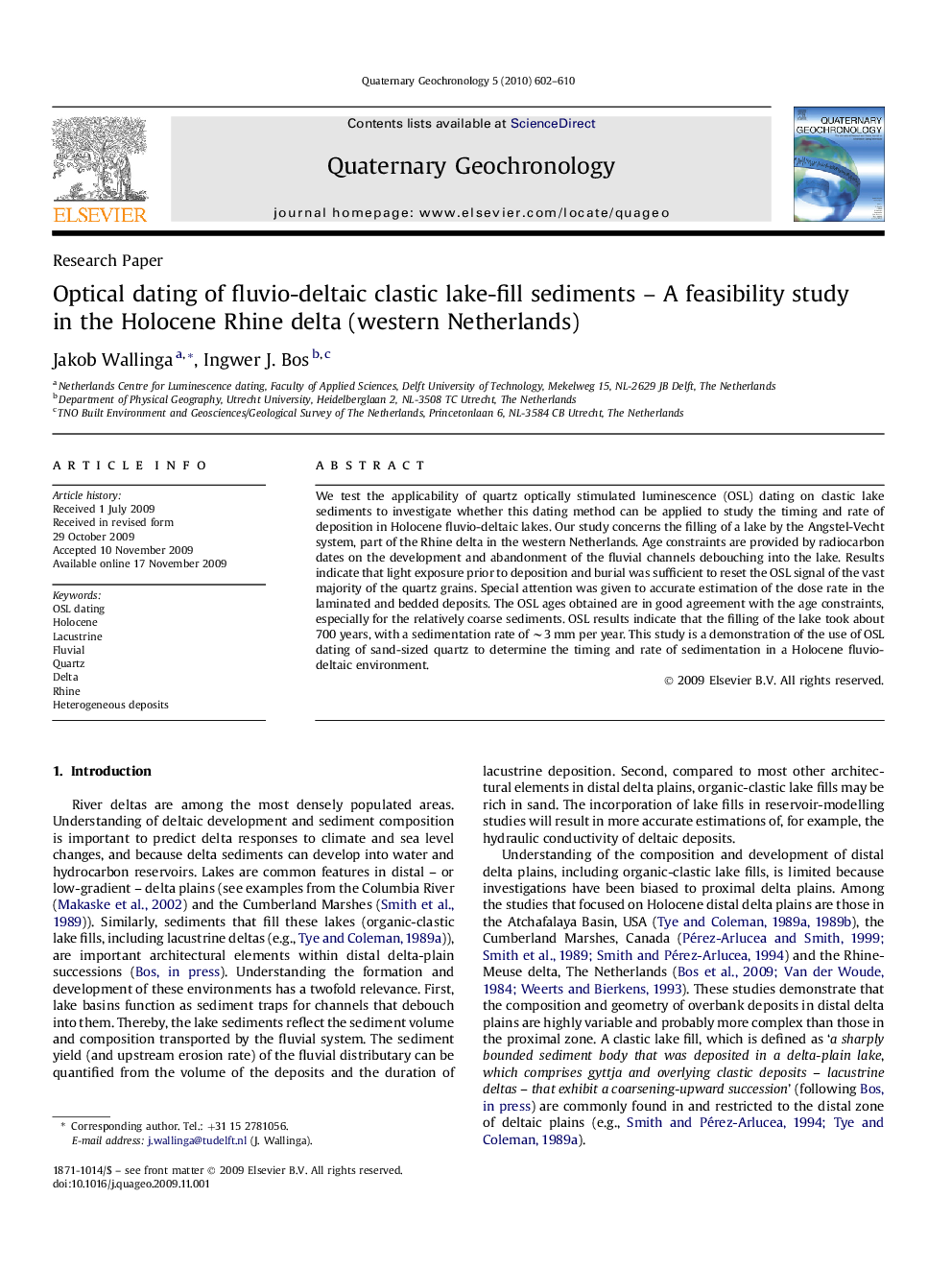| Article ID | Journal | Published Year | Pages | File Type |
|---|---|---|---|---|
| 4725207 | Quaternary Geochronology | 2010 | 9 Pages |
We test the applicability of quartz optically stimulated luminescence (OSL) dating on clastic lake sediments to investigate whether this dating method can be applied to study the timing and rate of deposition in Holocene fluvio-deltaic lakes. Our study concerns the filling of a lake by the Angstel-Vecht system, part of the Rhine delta in the western Netherlands. Age constraints are provided by radiocarbon dates on the development and abandonment of the fluvial channels debouching into the lake. Results indicate that light exposure prior to deposition and burial was sufficient to reset the OSL signal of the vast majority of the quartz grains. Special attention was given to accurate estimation of the dose rate in the laminated and bedded deposits. The OSL ages obtained are in good agreement with the age constraints, especially for the relatively coarse sediments. OSL results indicate that the filling of the lake took about 700 years, with a sedimentation rate of ∼3 mm per year. This study is a demonstration of the use of OSL dating of sand-sized quartz to determine the timing and rate of sedimentation in a Holocene fluvio-deltaic environment.
